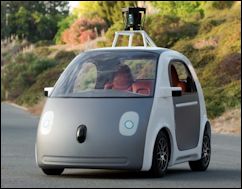The spread of Self-Driving Cars (SDCs) will lead to tremendous increases in the productivity of cites, argues Brian Wang in The Next Big Future blog. Wang builds his argument on claims by Google that the ability of SDCs to drive faster and closer with greater safety than human-driven cars will effectively double the capacity of roadways. In turn, doubling roadway capacity will eliminate a major limit to urban density. Doubling effective density, according to a variety of economic research, will result in a 12.5% increase in productivity. Furthermore, in today’s conditions, doubling a city’s population requires only an 85% increase in infrastructure to support it; strip out the need to upgrade roads, and infrastructure spending is even less. “In general,” writes Wang, “creating and operating the same infrastructure at higher densities is more efficient, more economically viable, and often leads to higher-quality services and solutions that are impossible in smaller places.”
Sounds great. Just one problem. Wang ignores the crucial distinction between roads and streets. Roads and highway, designed for the efficient movement of automobiles between far-apart destinations, very well could double in capacity if Google’s calculations are correct. However, city streets serve a very different function, especially as the Complete Streets movement takes hold. Streets provide local access to cars, buses, bicycles and pedestrians alike; they also help define public spaces. Doubling the speed of cars in city streets would displace other modes of conveyance despite ample evidence that people are yearning for more walkability. In other words, it won’t happen. City dwellers won’t let it happen.
It is appropriate to think of SDCs as a solution to the problem of congested roads and highways, and far-sighted transportation planners should begin scaling back their estimates of how much new construction will be needed over the next 20 years to achieve desired levels of mobility. But it would be folly to turn city streets over to SDCs at the expense of bikes, buses and pedestrians. That would destroy cities’ greatest competitive advantage in the emerging knowledge economy.
— JAB



